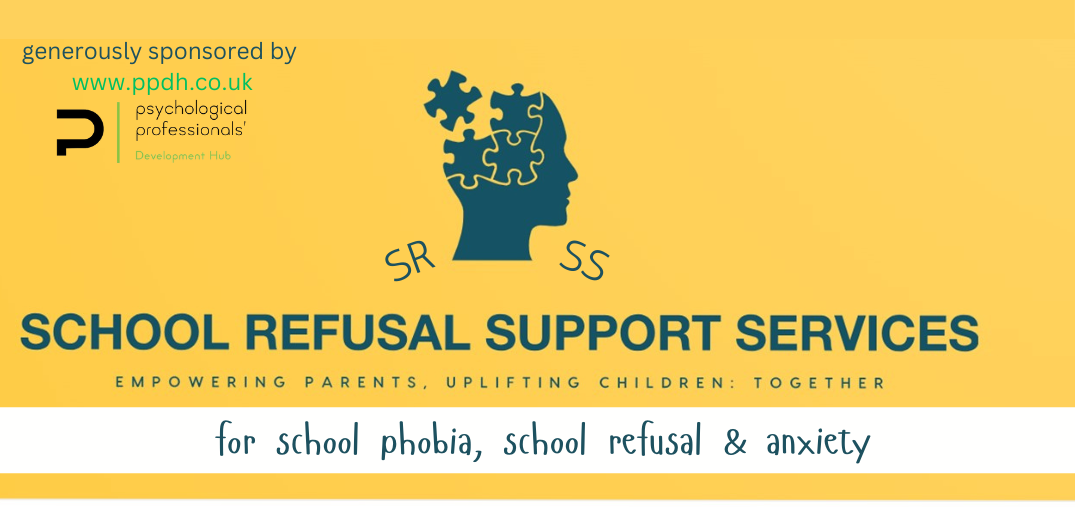
Tools To Recovery
This section of the website is about tools that I devised for School Phobia & ideas taken from the credited book below.
They worked for 'US' through a method called Desensitisation:
Please refer to Csoti, M (2003). School Phobia, Panic Attacks and Anxiety in Children; ISBN 978-1843100911
Please read right to the bottom but also carry out your own research on the following and your own choice of subjects:
Recommended areas of reading are:
- "Desensitization Techniques for Fear & Phobias"
- Understand the difference between "Flooding & Desensitization Techniques" and the dangers of "Flooding" your child
- "Understanding Unhelpful Thinking Styles"
ESTABLISH WHAT YOU BOTH WANT : Parent & Child
Its a two way thing, a child must go to school and a parent must take their child to school to receive an education. "That's not true!" I hear you cry as there is always home education. Home Education will allow both you and your child the respite from your daily ordeal and in most cases of School Phobia and extreme anxieties, children are too debilitated to make it out the front door. This coupled with a lack of support for the family makes attending school impossible and you may now feel you are at the stage of no alternative.
"In our case it was watching the system damage our child, we could not sit and spectate any
longer - deciding instead to use our energies in supporting her at home - rather
than getting embroiled in fighting for the support necessary if she was to remain in school."
-Pete Sharan Harry (Parent)
There are mixed beliefs about what is wrong or right for your child and the best that you can do is research all of the options, keep and open mind. You may find that your child's psychologist will be able to advise you here.
My own thoughts on home education is to see it as a temporary method until things calm or your child requests to return to school (There is evidence of this and one quote is used below from the many comments I receive). The "possible" danger of keeping Home Schooling as a permanent re-source is that it "can" continue to maintain the child's social problems by maintaining isolation from any social interaction which is not ideal. However, there is a ‘right’ time to re-intergrate your child back to school, preferably when stress, pressure and anxiety is lowered and your child can signal when they’re ready. I also acknowledge here that each case is different and may be unsuitable for a return to school, thus finding permanent Home Schooling most appropriate.
"The turning point came towards summer of 2013 - he was getting very bored at home and finding the
days quite long. In addition his older brother who is in college was doing quite well and
he knew that if he didn't go back to school he couldn't go to college. We also had a
mentor coming in, someone he could confide in outside the family circle and
this has been a godsend. The best feeling was his first day back in school last
September and it went from strength to strength "
-Afric Bolger (Parent)
NB: Additional evidence to support the latter has also come from adults who have contacted me, making me aware that they suffered when they were children themselves. They have explained they are still suffering and that matters only escalated as their condition was never addressed. They experience an impact on life, work and of course relationships and continue in a life of avoidance as a strategy to cope.
" I changed my daughters school to one that has the knowledge and the
passion to support her anxieties around attending school and many other things.
After changing her school she grew wings and flew !!! Once a complete refuser now has
100% attendance. Such a shame that school staff are not trained as well in all schools"
-Chrissy Hoey (Parent)
What is it you both want?
Your child may say they want to go to school but knows that something deep within is stopping this from happening.... FEAR! You know that the pressure is on you from the school or Local Authority to make sure your child is receiving an education so this means you and your child must work together to do so and the key thing is to learn and build TRUST.
TRUST is a major factor here. You will find that a person with a fear does not trust much like having trust in a person holding a spider you are terrified of..... Do you trust them 100% not to throw it on you? Your child may have already have been subjected to force either physically or vocally. You may have felt it necessary to even trick your child in order to find success in getting them into school. I know we experienced these things. Unfortunately, this breaches trust and you need to rebuild this so how do you and your child both build back that trust? A Contract !!
THE CONTRACT
The idea of the 'contract' was to make a 'promise' and in turn build a level of trust. My son needed to believe that past attempts of restraint by staff members at his school would not happen again and also their gestures for me to leave in the form of trickery would never happen again either.
This here is one of the Contracts we used. Putting the date, my promise, Andrew's promise, outlining the step your are taking and finally completing this with a signature and date to seal the promise.
The 'PROMISE' section is what you vow to stick to. Andrew's was more about the step he was willing to take each week. Individuals with phobias can be cured by extreme measures which is called "Flooding" so for example, someone with a fear of spiders - lock them in a glass box with a spider and tell them they cant come out until they've touch it. Its a way of forcing the situation. Very extreme. Or even leaving them in a room with more than one spider. Quite frankly I would opt for the kinder method of desensitization which is to do it 'little by little'
With Andrew, we began by driving up to the school late one night. No one could grab him, the school was locked up and in complete darkness and it was a chance to approach the school in complete lock-down, talk and get to grips with how he was feeling. He felt physically ill. It gave me a starting point to work with. He was able to talk about what happens and where it happens so for example, a key psychological factor/trigger was hearing the bell ring. There would also be other triggers such as auditory, visual & olfactory to which Andrew would not have been able to share or be aware of which would have affected him too.
We went home and came up with our first Contract which was to simply enter the school reception with me for a matter of minutes, hear the bell and leave. We then built on this. As you can see to the left, we were doing pretty well with Andrew managing to put himself in the school yard line and with me heading to the Music Room and I left at break time. We had come a very long way in 14months. I had begun with building Andrew up with me at his side to then me moving away into other areas of the school, to then leaving the school 5 minutes before end of day, 10 minutes before end of day and so on.
Andrew was terrified following each of his steps, but how did I know anything was changing or getting better ?
I measured it of course!!
The Fear Factor Rating Scale
The what I hear you cry ! ! ! Yes the FFRS. This was how I knew that things were getting better. During each step of Andrew's rehabilitation, I asked him to tell me how scared he was. 10 was the most scared he could possibly feel and 0 was nothing at all. On the way into school I would turn and ask Andrew for his rating. He would write it down. We came home each night and I presented him with a chart and asked him to mark the chart where his number appeared.
Look what happened....
As you can see, at the start of this particular step, Andrew was scoring a fear level of 5 (remember 10 is extreme fear and 0 is none). The following day the fear falls to 2.5 and the following a ZERO. It is at this stage I knew he was ready for the next step. How I approached this was to then show Andrew all of the scales he had drawn arrows on and signed and he was seeing his own hand writing and signature. He wasn't being persuaded or pushed. It was all his own evidence so he had to believe it. It was very effective and his next step could be negotiated.
Please note that stages may take 5 days, 3 days or 2 weeks. Its about being comfortable.
ADDITIONAL TOOLS:
The Clock which assists with The Contract (Above)
Visual Aids
Does your child understand their battle? Do they see what they have achieved or accomplished? You could show them. Tell them they're going on a mountain climb like a hero. Think of something inventive to make them feel good and positive and mark it in stages or flags. Break these said stages down to co-inside with their own stages.
The stickers were silly but my Son was fine with them (thank goodness).
The image is to give your child a visual analogy to help them understand their journey.
Andrew had many many many stages to his rehabilitation but we never thought about how to show what he had achieved, where he was at and how far he had to go.
However, when I thought of the idea, I did it as a summary in brief and he was amazed and how well he had done. A proud moment both for him and very much for me.
Ok so you've got this far and is anyone wondering who the juggler was I was talking about on The Contract? I'm hoping this helps you as much as it helped motivate my Son and I'm hoping it helps you understand my theory as to why I believe you need to try your best to keep going, if you can.
REMEMBER The Juggler: our MOTO
I told Andrew that a juggler isn't born Juggling. He has to learn what to do. When he first picks up a bundle of oranges or batons etc, he will make an attempt and drop most of what he is juggling to the floor. He will make several attempts to juggle but things will go wrong and he will feel he has failed.
However, if the Juggler does a little something everyday to practice, he will soon get better and better and get it right. If he chooses to run away from what goes wrong ......... well you know the rest.
